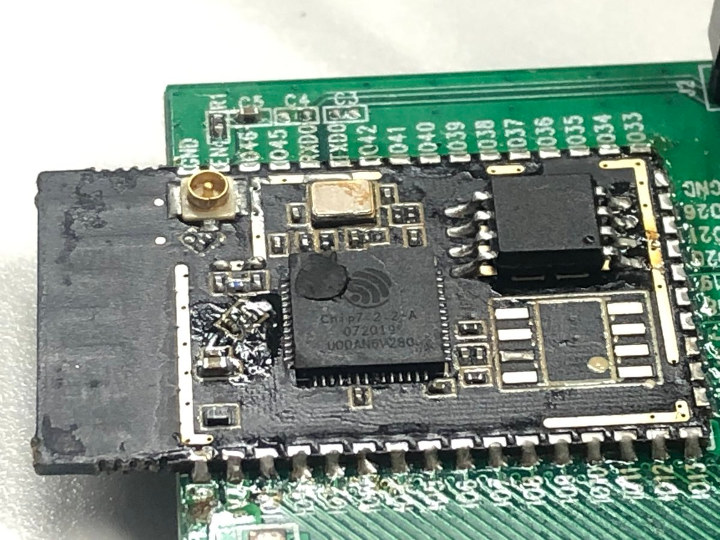Espressif Systems has not released any new chips since the launch of ESP32 WiFi & Bluetooth SoC in 2016. But it looks like an new chip may be right around the corner, as John Lee from Espressif Systems teased us with a photo featuring a module equipped with “Chip 7” that should be released “soonish”.

We really don’t know much about the chip except it comes in a 56-pin QFN package (4x 14 pins), and it won’t most likely be named Chip 7 once it is released.
One Twitter user left a comment mentioning that it “looks like a bodged RF Filter. 5GHz mod?”. This reminded me of the potential ESP32-D0CD / ESP32-D2CD processors with dual band (2.4 + 5 GHz) WiFi. When I say “potential” it simply refer to the fact that ESP32 nomenclature has a “CD” connectivity option for WiFi ac/c/b/g/n and Bluetooth dual mode. But Espressif never officially announced anything about ESP32-D0CD yet, and ESP32 chips are suppose to come in QFN48 packages, so “Chip 7” may be something completely new. We should find out soonish enough 🙂

Jean-Luc started CNX Software in 2010 as a part-time endeavor, before quitting his job as a software engineering manager, and starting to write daily news, and reviews full time later in 2011.
Support CNX Software! Donate via cryptocurrencies, become a Patron on Patreon, or purchase goods on Amazon or Aliexpress




